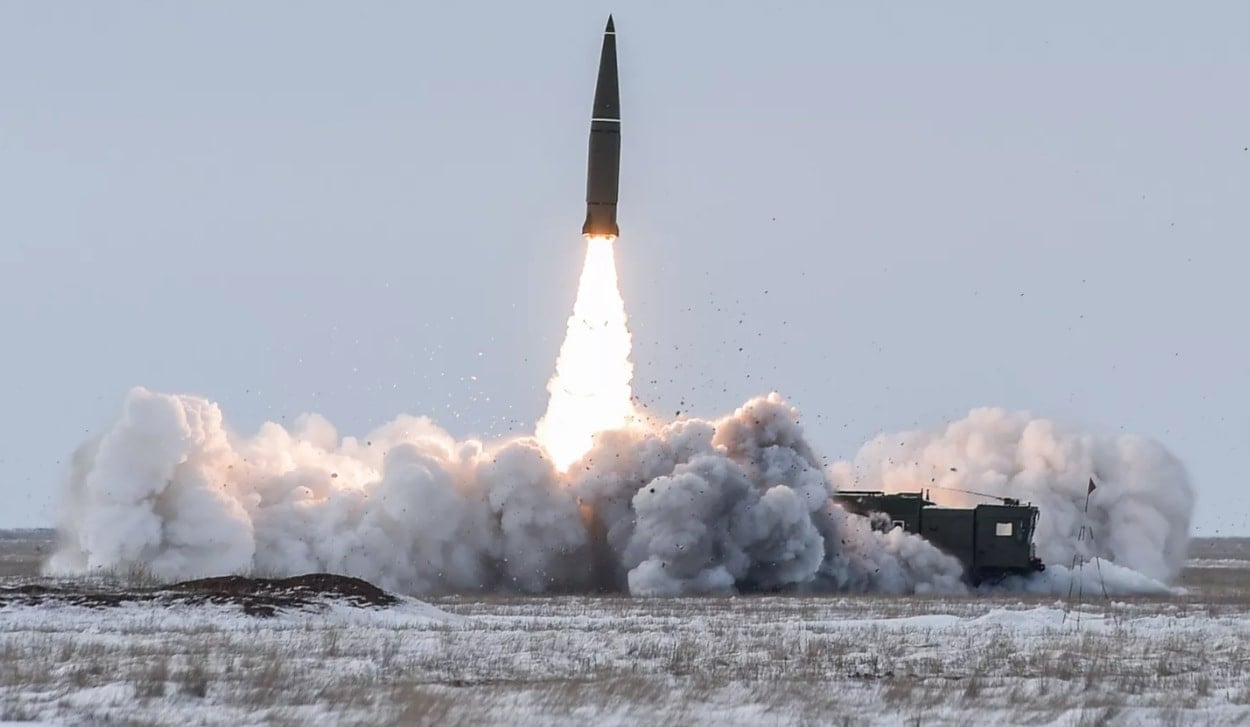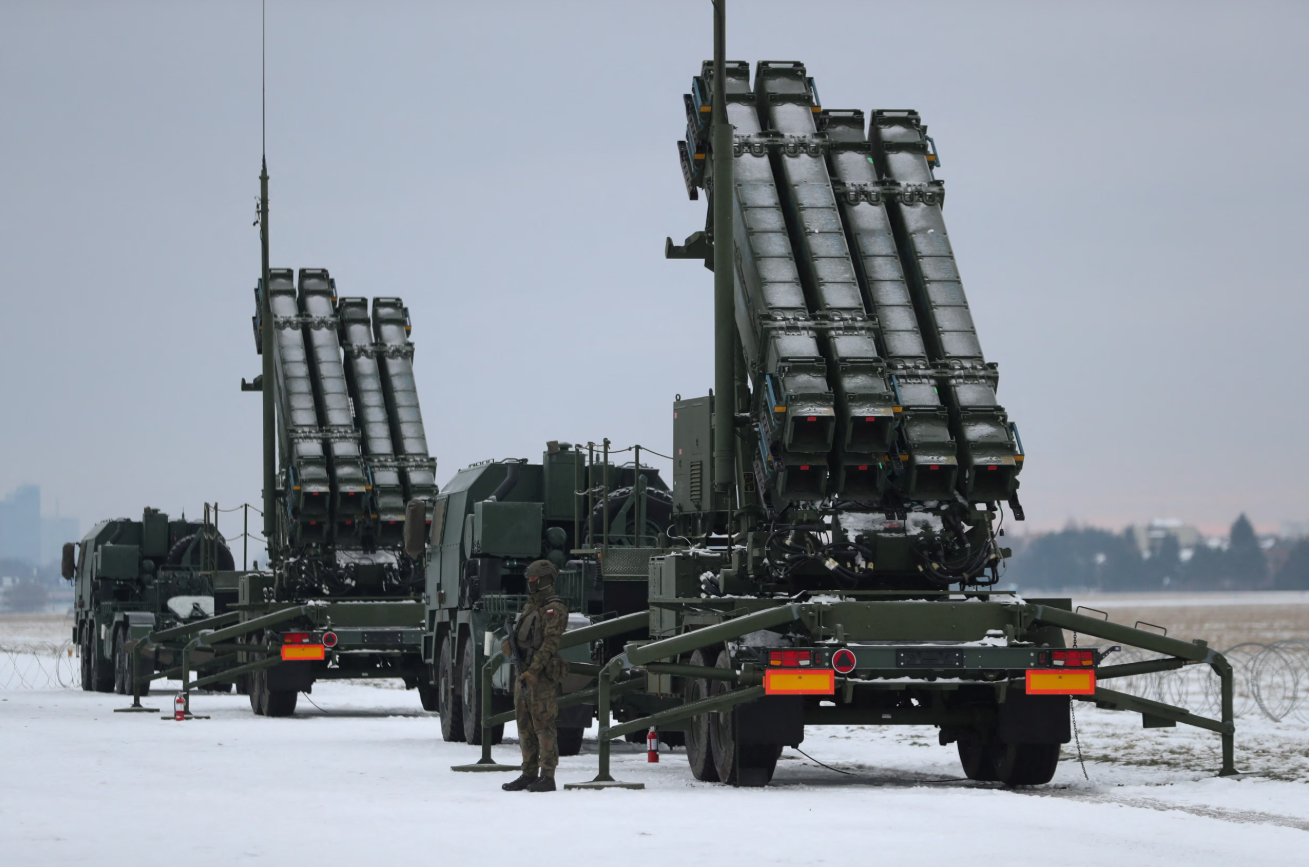Moreover, this line of tactical weapons has also affirmed its position with a very high rate of hitting targets and overcoming missile shields and is known as the most difficult missile to intercept in the world today.
So what makes the Iskander-M tactical ballistic missile complex so special?
The “irregularities” of Iskander-M
According to the Russian newspaper Lenta, one of the special features of the Iskander-M missile is the combination of ballistic and cruise trajectories, making it very difficult to calculate and predict the missile's flight path.
Unlike traditional ballistic missiles that usually fly in predictable trajectories, the Iskander-M uses a quasi-ballistic trajectory. Specifically, during the acceleration phase and creating potential energy to an altitude of 50-100km, the missile still uses conventional ballistic principles. However, during the target approach phase, the missile does not fly according to ballistic principles, but uses a gliding mechanism with hypersonic speeds reaching Mach 6-7 (about 7,400 km/h).
 |
| The 9K720 Iskander-M missile complex has special tactical and technical characteristics that make it very difficult to intercept. Photo: TASS |
Dr. Fabian Hoffmann, University of Oslo (Norway) assessed: "The rocket is like an acrobat diving from the stratosphere. You cannot use conventional mathematics to predict its approach point."
The Iskander-M missile’s unique aerodynamic design and specially designed composite coating create a “plasma cocoon” as the missile travels at hypersonic speeds through the atmosphere. This plasma layer absorbs/scatters radar signals, making it difficult to detect and identify the Iskander-M missile, even confusing the target with background noise.
According to Topwar magazine, there are few ballistic missiles that can maneuver in the terminal phase like the Iskander-M. With 4 aerodynamic tail fins and an engine that can change thrust vectors, the missile can perform dozens of direction changes before reaching the target. This feature makes it difficult to track and intercept the missile. In addition, the inertial navigation system and GLONASS/INS satellites provide flight path corrections every 0.3 seconds.
In addition, the Iskander-M missile is continuously upgraded and adjusted based on combat reality. The latest Iskander-M missiles are also equipped with "multi-layer" decoys. The Iskander-M is integrated with jamming equipment, creating fake signals to ignite enemy radars. In the final phase, the missile also releases jamming traps with similar reflected signals, causing optical-infrared surveillance systems to overload or track the wrong target.
The most important factor is that the Iskander-M missile has a speed that surpasses most advanced missile defense systems in the world. For example, the Patriot PAC-3 complex is equipped with interceptor missiles that reach Mach 5 speed, making it difficult to intercept hypersonic targets and has many "evasion" solutions like the Iskander-M.
Or like the SAMP/T complex with interceptor missiles only reaching Mach 4.5 speed, as for the THAAD system, the ability to intercept Iskander-M is almost useless because the attacking missile descends at a very low altitude, especially in the final phase of approaching the target.
Dr. Theodore Postol, Massachusetts Institute of Technology (USA), commented: "Iskander-M is not a missile - it is a smart weapon system. Every element from aerodynamic design, decoys to avoidance algorithms are calculated to overcome missile shields. Patriot is only effective if it hits it in the missile's acceleration phase, but this is impossible."
Is missile interception easy?
In reality, missile interception is a complex and difficult process. Any variable in this process can cause the missile defense system to lose its target.
Tracking a missile flying at hypersonic speeds in a very short time is not easy. The enemy warhead can lose track at any time due to plasma effects, loss of heat signature, not to mention the fact that to intercept a target with a small cross-section like a missile warhead, any inaccuracy of the interceptor means will lead to failure.
 |
| The Patriot PAC-3 missile interceptor system once confronted the Iskander-M missile. Photo: Defense News |
Specific examples of failed interceptions have been demonstrated by the practice of the US Patriot missile interceptor system in the Middle East. During the first Gulf War, the coalition’s Patriot systems once lost track of an Iraqi Scud missile launched at Israel. The reason given later was that the system lost the infrared signal of the target missile when it cooled down too quickly. Or more recently, the forgettable performance of the Patriot PAC-3 version in Saudi Arabia and Ukraine.
TUAN SON (synthesis)
* Readers are invited to visit the World Military section to see related news and articles.
Source: https://baodaknong.vn/tai-sao-ten-lua-iskander-m-cua-nga-rat-kho-bi-danh-chan-253969.html




















































![[Maritime News] More than 80% of global container shipping capacity is in the hands of MSC and major shipping alliances](https://vphoto.vietnam.vn/thumb/402x226/vietnam/resource/IMAGE/2025/7/16/6b4d586c984b4cbf8c5680352b9eaeb0)













































Comment (0)